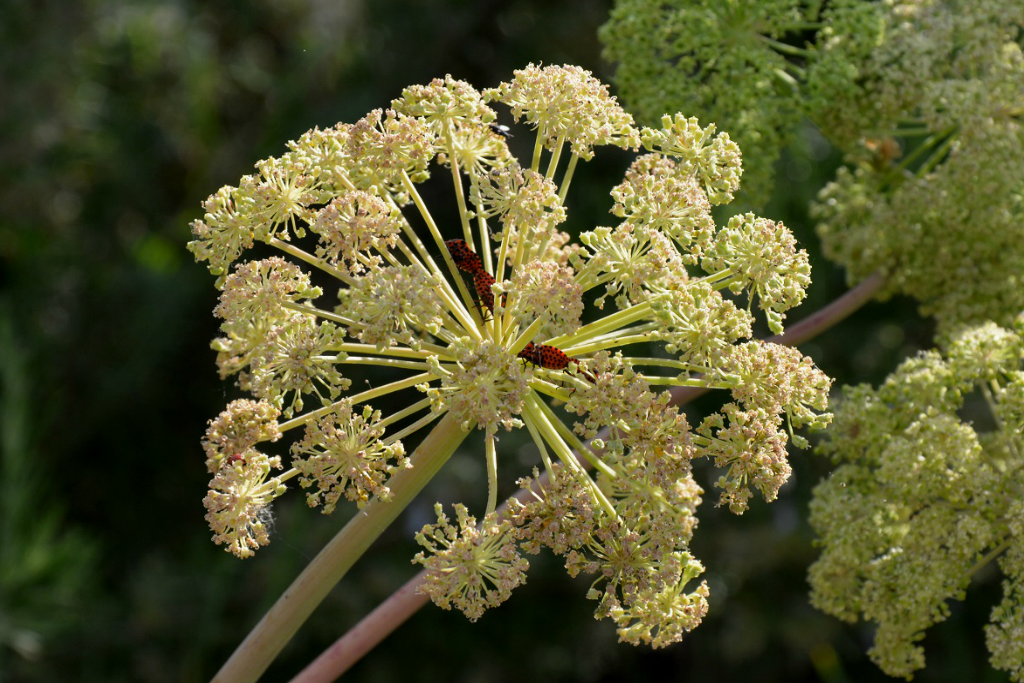L’angélique
Angelica archangelica L.
Apiaceae
Angelica is a biannual plant that produces on its first year large cut leaves which carry on the second year an imposing inflorescence which has many umbels of yellowish green flowers and that can reach 2m. Cultivated since the Middle Ages, it is now widely naturalized in temperate Europe, wet grasslands or along riverbanks.
Angelica is one of the rare medicinal plants to have walked through history from the North to the South. It originally comes from the northernmost parts of Europe (Iceland, Scandinavia), and was imported into Western Europe by the Vikings or by monks who evangelized Scandinavia at the end of the 9th century, bringing the flower with them.
Its Latin name, Angelica archangelica, , comes from the legend that an archangel taught the medicinal properties of the plant to men in order to protect themselves from the plague. This plant has long been considered as a panacea, protecting from diseases and evil spells, before falling gradually and unjustlyinto oblivion.
In 1810, Bordard in his Comparative Medical Botany Course said of the angelica: “We see with difficulty that a plant so active and so rich in properties is so little used today, while we adopt with enthusiasm Some exotic remedies whose novelty, scarcity, and expensive price alone are their only merit. ”
Currently, angelica is used to facilitate digestion, relieve intestinal spasms and bloating, as well as a complement in the treatment of bronchitis.
The botanical genus Angelica refers to many botanical species, especially in Asia such as Baizhi, Angelica dahurica or Dong Quai, Angelica sinensis, two important plants of traditional Chinese medicine.
In addition to its medicinal properties, angelica is used in liquorice, as in the Benedictine or Chartreuse as well as in pastry and confectionery.
Here is a recipe that will allow you to rediscover the true taste of candied angelica because at the moment we often use celery stalks flavored and colored instead of angelica…
Stems of candied angelica
Prendre les plus jeunes tiges
Placer dans une poêle en couvrant d’eau
Faire bouillir environ 10 minutes
Egoutter et réserver l’eau de cuisson
Eplucher les tiges
Refaire bouillir avec la même eau jusqu’à ce que les tiges verdissent
Egoutter
Préparer un sirop avec 500 g de sucre et 500 ml d’eau
Plonger les tiges d’angélique dans le sirop et laisser cuire à feu très doux (environ deux heures) jusqu’à ce que les tiges deviennent transparentes
Egoutter et stocker au frigo.
Garder le sirop qui est très aromatique et peut servir en pâtisserie.
Précautions
Comme d’autres plantes de la famille des Apiaceae, l’angélique peut provoquer des réactions cutanées par photosensibilisation (par contact avec la plante). Cela est dû à des composés naturellement présents dans toute la plante, les furocoumarines.
